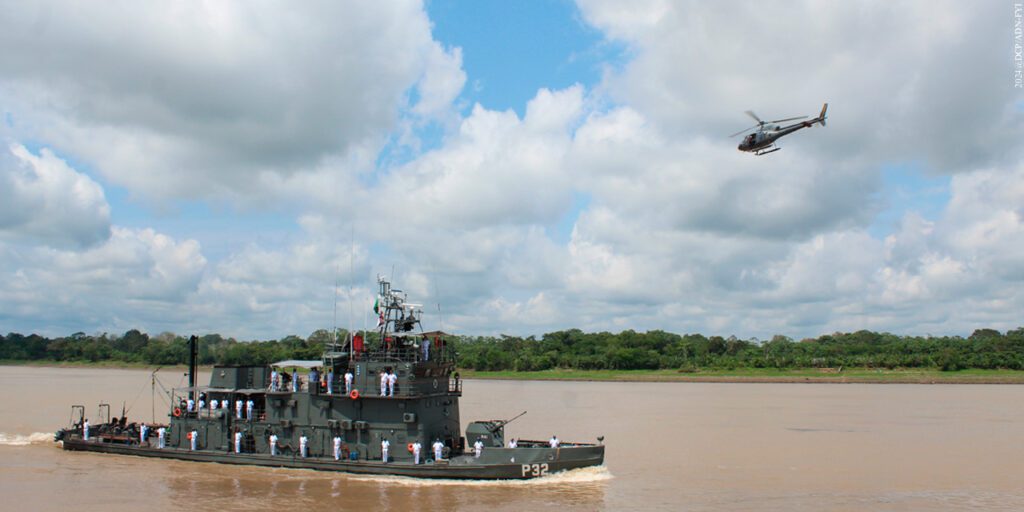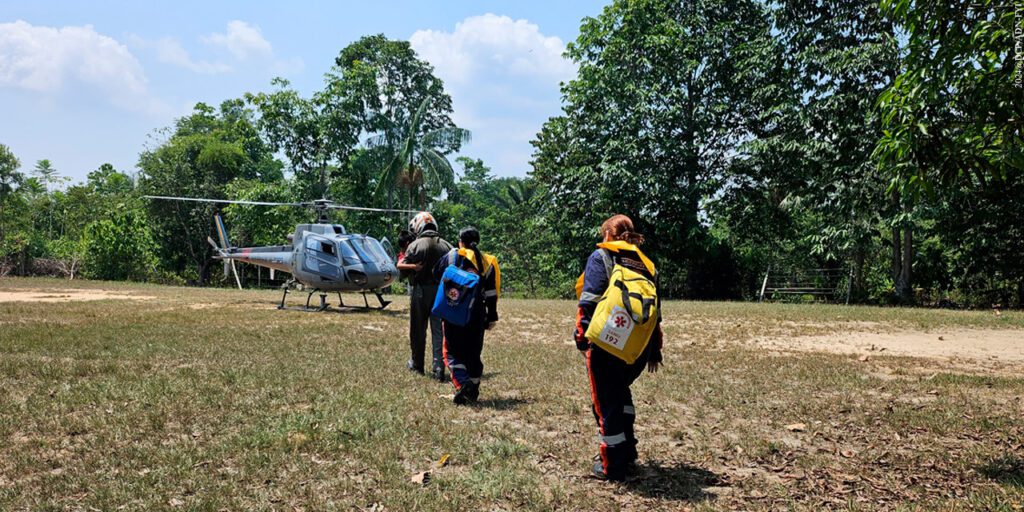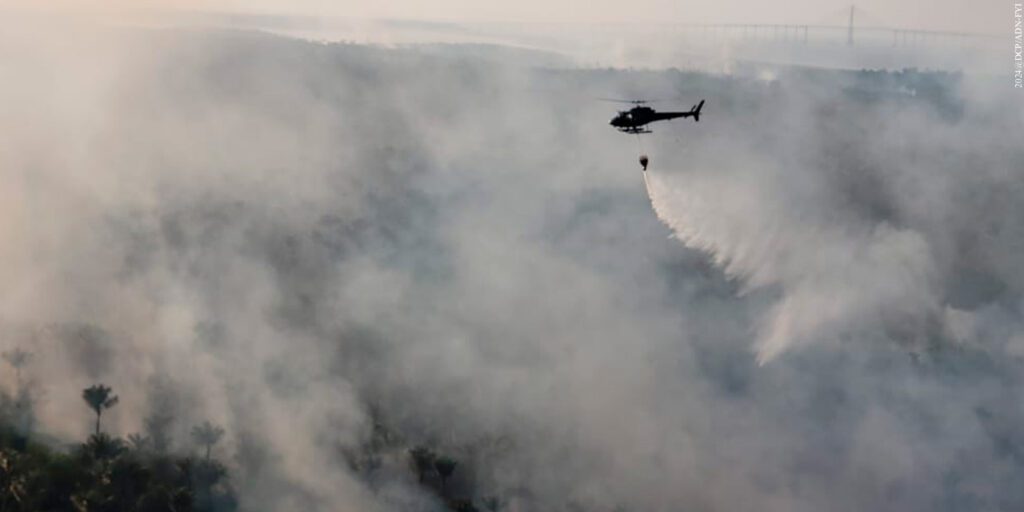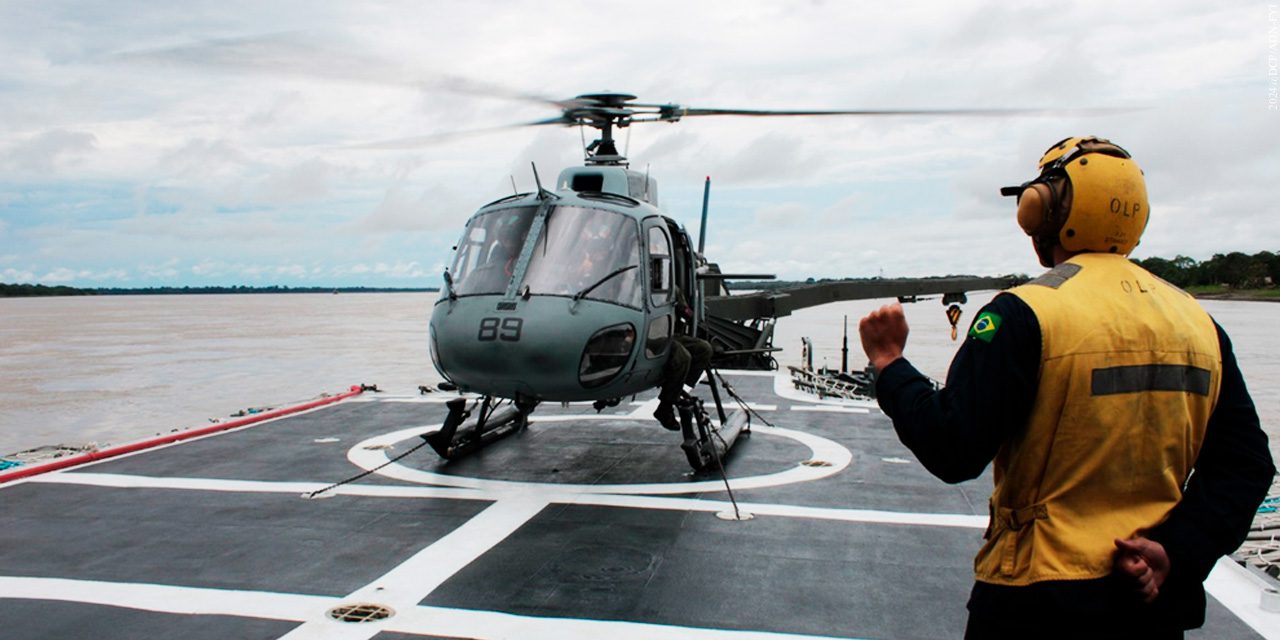Operating in the Western Amazon, the Brazilian Navy’s air unit has logged more than 51,000 flight hours
By Second Lieutenant (RM2-T) Victor Cruz – Brasília, DF
The Brazilian Navy’s (MB) 1st Northwest General Purpose Helicopter Squadron (Fleet HU-91) turns 30 this Wednesday (31). Known as the “Tucano Squadron”, the unit was activated in 1994, but Naval Aviation’s presence in the Western Amazon began much earlier, with the creation of an air detachment in 1979, totaling more than 51,000 flight hours in the region.
The Commander of EsqdHU-91, Frigate Captain Bruno Heluy Martins, says that the Fleet expands the range of action of the Naval Forces operating in the Western Amazon, including contributing to the fight against cross-border and environmental crimes and drug trafficking, in cooperation with the Public Security forces.
“The ‘Tucano Squadron’ conducts meticulous aerial reconnaissance work during operational activities, extending the reach of troops moving by boat. These actions have already resulted in the seizure of narcotics, as well as the location of dredges used for illegal gold extraction in areas such as igapós (submerged vegetation), tributaries and environmental reserves, i.e. places that are difficult to access for the River Patrol Vessels used in the operations,” he explains.
In 2023, the squadron took part in Operations Ágata (Joint Command Uiara), coordinated by the Ministry of Defense, reinforcing the MB’s presence along the border and confronting the activities of criminal organizations. The actions carried out by the aircraft included patrolling and the transportation of personnel and material.
Last year, the Squadron also took part in Operation BraColPer, which aimed to strengthen interoperability between the navies of Brazil, Colombia and Peru, in the region of the triple border between these countries; it supported Hospital Assistance Actions and fought a forest fire in the municipality of Iranduba (AM). Search and Rescue and Aeromedical Evacuations were also carried out.
In addition, the aircraft were used in support of the Amanaci Joint Operational Command, in civil protection and defense actions in regions in emergency situations caused by the severe drought that hit the entire Amazon region in the second half of last year. In 2023, the “Tucano Squadron” flew a total of 842 hours.

Rescue in remote areas
An example of the Squadron’s work on behalf of the Amazonian population was the rescue of a couple who spent almost a week adrift on the Rio Negro, near the municipality of Iranduba (AM), in April 2023. The action was carried out in conjunction with the Western Amazon River Captaincy.
“The two had left the municipality of Novo Airão, located 200 km from Manaus, for a fishing trip, when the husband suffered a heart attack, leaving his wife not knowing how to return. At the time, the helicopter crew managed to locate the fishermen’s boat and provide first aid to the woman, after noting that the husband had died on the spot,” recalls Commander Heluy.
The Squadron also carried out coordinated actions with the Mobile Emergency Care Service (SAMU) in Manaus, with the extraction of patients by means of Aeromedical Evacuation, in communities isolated by the dryness of the rivers, where it would not be possible for rescuers to access by waterway or land. On that occasion, it was possible to save five lives that were in danger.

Fighting forest fires
In October last year, the “Tucano” Squadron carried out an unprecedented activity. The HU-12 “Esquilo” aircraft were used to fight forest fires that were spreading in the Metropolitan Region of Manaus. The cooperation was requested by the Amazonas State Security Forces.
“The firefighting operation lasted eleven days and was conducted using equipment known as the ‘Bambi Bucket’, a bucket suspended from a cable that is designed to supply water to extinguish the flames. During the operation, 227 incursions were made to the outbreaks of fire,” says the Squadron Commander.
The “Bambi Bucket” allowed the aircraft to pour almost 70,000 liters of water, which is equivalent to 14 water trucks, directly onto the outbreaks of fire, in places where it would have been impractical for firefighters and large vehicles to arrive.

Agência Marinha de Notícias *** Translated by DEFCONPress FYI Team ***
